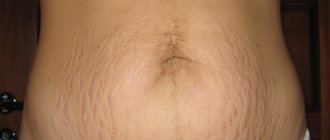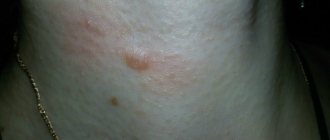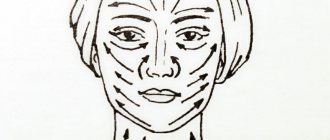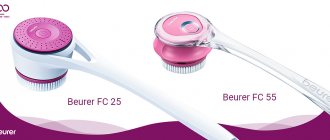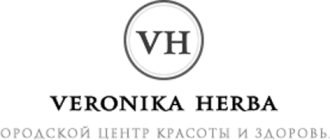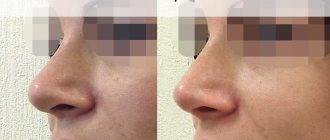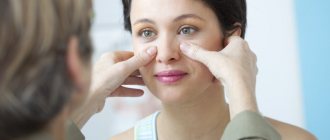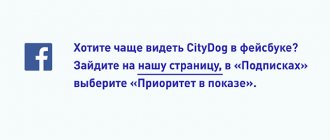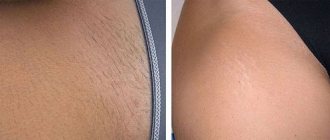Good afternoon, I'm worried about how my skin will look after the cast is removed. Tell me, is there anything I can do to keep my skin beautiful?
Proper skin care before and after rhinoplasty is very important. Why? The thing is that the skin is subjected to serious impact, both during the operation and after. Firstly, it is often treated with antiseptic solutions, and secondly, part of the face is under plaster for a long time without the possibility of cleansing it. As a result, problems may arise with the treatment of the skin.
How to properly care for your skin before and after rhinoplasty?
There are two main types of skin: dry and oily.
Before surgery, people with oily, thick, porous facial skin are advised to:
- Do a deep facial cleansing. Why? Before surgery, the face is treated with alcohol or solutions that contain it. As a result, the top layer dries out and the enlarged pores become clogged. If they have not been cleaned first, there is a risk that after the cast is removed, you may see many small pimples with pus, which leave behind pitting scars. They appear due to the “greenhouse effect” that has arisen under the gypsum, which favors the growth of infection.
Before surgery, people with dry skin need to:
- Lightly nourish the skin with a mask or cream.
- When preparing for surgery, it is best to use proven cosmetics that are well suited and do not cause allergies. Experiments in this case can lead to such negative consequences as the appearance of a rash, excessive oiliness of the skin, etc.
After rhinoplasty:
After rhinoplasty, the patient may notice that the skin on the nose and under the eyes begins to peel off; in some cases, on the contrary, many areas of very oily skin appear, and you can often see a large number of pimples, indicating inflammation of the skin.
Experts advise that the simplest treatment is to wash your face regularly. At the same time, do not be afraid to touch the skin. You need to wash your face very carefully and use a hard towel at the end. This makes it possible over time to completely eliminate the remnants of dead skin, kill bacteria and return the skin to its normal state. This may take two to three months.
It is best not to use moisturizers during this time, as this may slow down the cleansing process.
You can also use soft, gentle scrubs to cleanse the skin after removing the cast. They should not have a warming or cooling effect. Such products do not need to be rubbed in for a long time and are easily washed off with water.
Reminder! Before deciding what to do with your skin, it is best to consult your doctor.
Providing proper skin care before and after rhinoplasty is one thing, but properly caring for scar tissue is another. What do you need to know?
Rhinoplasty: complications, risks, problems
Rhinoplasty is one of the most common cosmetic surgeries performed each year, but it has the same potential risks as all other procedures. Although most rhinoplasty procedures proceed without problems, the patient should be aware of all the potential side effects and risks of rhinoplasty, as well as their personal risk factors. Discussing these nuances with an experienced surgeon will help make the operation safer and the rehabilitation process easier and more predictable.
What you need to know about scars after rhinoplasty?
Most patients, even before surgery to correct the shape of the nose, have natural questions. Will there be any scars left after this? What will need to be done to get rid of scars after rhinoplasty?
A scar is the connective tissue that appears at the site of the incision. Therefore, after any operation it remains. The question is what size it will be, where it will be located, and whether it will be noticeable to others.
Important! If you turn to a professional surgeon, the scars after the operation will most likely be practically invisible to others and will not cause concern to the patient, since they almost completely resolve, and we can talk about rhinoplasty without scars.
How to prepare for rhinoplasty
- Avoid taking medications containing aspirin or ibuprofen for two weeks before and after surgery. These medications may increase the risk of bleeding.
- Also avoid herbal remedies and dietary supplements. If you smoke, reduce the number of cigarettes you smoke or quit smoking.
- Smoking slows down the healing process after surgery and may increase the chance of developing an infection.
- Plan to take 2 weeks off.
- After surgery, you will feel better every day during the first week.
- Bruising and swelling practically disappear 10-14 days after rhinoplasty.
Preserving closed plastic
See more “Before” and “After” photos
What determines whether scars will appear or not?
- Depending on the type of operation (closed rhinoplasty does not leave visible scars, and after open rhinoplasty there is a barely noticeable scar under the nose and in the columella area, after rhinoplasty of the wings of the nose, the scars are located at their base. After revision or reconstructive rhinoplasty, they are more noticeable, since the doctor deals with already damaged tissues).
- Depending on the thickness and type of skin (dark and thick skin is more susceptible to rough scarring).
- From the skill of the surgeon.
- Depending on the person’s age (at a more mature age, as a rule, tissues heal much slower and scars are more noticeable than at a young age).
- Depending on the individual characteristics of each patient.
Rules for successful rehabilitation
After rhinoplasty, you need to spend a day in the clinic. You should stay in bed with your head elevated above your chest to reduce bleeding and swelling. Some nosebleeds are possible for a few days. Special silicone air duct plates are placed in the nose, so patients can breathe through their nose immediately after surgery. Significant bruising and swelling around the eyes is normal and usually disappears within 7-10 days after surgery.
To further reduce the chance of bleeding and swelling, take precautions for several weeks after surgery.
Precautionary measures
- Avoid strenuous exercise such as aerobics and running.
- Don't blow your nose.
- Eat high-fiber foods such as fruits and vegetables to avoid constipation.
- Avoid extreme facial expressions such as smiling or laughing.
- Brush your teeth gently to limit movement of your upper lip.
- Wear clothes that button in the front. Do not place clothing such as shirts or sweaters over your head.
What types of scars are there?
- Normotrophic scars are practically invisible to others, since they are very thin and light. Usually, they do not bother patients.
- A keloid scar is characterized by constant growth. At the same time, it often itches and causes anxiety to a person. Its main feature is its pink or red color, it is convex and very dense. It definitely needs to be treated (it occurs extremely rarely after rhinoplasty, below is a photo).
- Subcutaneous. Scars Appear as bumps on the back or tip of the nose. They appear two to three months after unsuccessful rhinoplasty.
- Internal scars. They can appear after unsuccessful closed rhinoplasty. Scarring in the nose causes difficulty breathing. Unlike external scars, internal scars heal faster and get smaller over time. This is explained by the good restorative ability of the mucous membrane.
- An atrophic scar may be pink or even white. Outwardly, it looks like a pit, as it is located below the skin level. Occurs after a serious inflammatory process. The scar may look like this:
- Hypertrophic scar. Slightly protrudes above the surface of the skin. Often when the process of its formation is completed, it becomes atrophic and becomes less noticeable.
Early recovery period
- You will experience nasal swelling for several weeks, then your condition will gradually improve.
- Nasal breathing may also be impaired for a few weeks, but will improve as swelling decreases.
- For a short time after surgery, patients may experience swelling, nasal pain, or a dull headache.
- Most patients take pain medication for three to four days and return to work in just over a week after surgery.
- The results of rhinoplasty gradually become apparent as time passes and swelling decreases.
- Swelling may occur occasionally in the first year after the procedure. It is usually more noticeable in the morning and disappears throughout the day.
- Contact lenses can be worn immediately after rhinoplasty, but glasses should not be worn for several months after surgery.
How to care for scars?
Proper care of scars helps make them less noticeable or even invisible to others. This helps prevent the appearance of a scar that will be impossible to remove without surgery.
For the first two weeks, any scar must be treated with special solutions, ointments and creams that prevent the occurrence of inflammatory processes.
A classic example of such treatment: wipe the seam with vodka. Please note, it is vodka, not alcohol. Otherwise, you can get the opposite effect.
When the edges of the wound tighten and the crust comes off, you need to continue caring for the seam. This should be done to reduce the process of tissue scarring. What does this care include? Usually, the doctor prescribes the use of special medications for non-surgical treatment. These may be ointments, gels or patches to remodel scars or prevent their formation. These products must be used exactly as prescribed by your doctor. All this is done so that the scars dissolve faster and acquire a normal skin color.
Treatment usually lasts approximately 12 weeks. That's how long it takes to see the end result.
Additional non-surgical treatments:
- To keep scars flush with the skin, chemical peeling procedures are often used.
- To reduce the density of the scar, phonophoresis is used.
- Treatment with corticosteroids is used to treat keloid scars. The technique involves local injections aimed at reducing collagen synthesis. Scar injections are given no more often than once every 1-1.5 months.
- To remove or make an old scar less noticeable, laser resurfacing is often used. To obtain a visible result, several sessions of laser treatment of the problem area are performed. The technique has its contraindications. Therefore, a mandatory consultation with your doctor is required.
Surgical methods for removing scars and scars.
In cases where non-surgical methods for removing scars are powerless, surgical methods are often resorted to. In most cases, they involve removing scar tissue and replacing it with healthy skin.
Using the operation you can:
- reduce the width of the scar,
- smooth the surface of the skin,
- move the scar to an area less noticeable to others, etc.
At the same time, surgeons always try:
- do not injure the surgical site too much,
- when sutures are placed, do not allow tissue tension,
- make incisions only at right angles in order to achieve maximum convergence of healthy tissue during healing.
What are subcutaneous scars and how are they treated?
Subcutaneous scars are considered undesirable long-term complications after rhinoplasty, which may not appear immediately when improper scarring of internal tissues occurs. How do they look? Most often they appear as bumps on the back or tip of the nose.
How are they treated? Severe scarring of internal tissues is most often treated with intensive anti-scar therapy. Namely, injections of pyrogenal, vitreous and other drugs are given in combination with special physiotherapy procedures (ultrasound, paraffin baths, ultraphonophoresis, etc.).
In difficult cases, repeated surgery is used to remove scars. If required, autografts are used during such an operation. Moreover, scar treatment is required during rehabilitation.
Complications during rhinoplasty
Any surgical operation can cause complications, because only the surgeon who does not operate makes no mistakes. Knowledge about possible complications and consequences is necessary to make the right decision, reduce the number of such cases, minimize their severity and treat them if they occur. Some complications of rhinoplasty are related to anesthesia and are not covered in this article. Anaphylactic reactions to general or local anesthesia call into question the knowledge and skills of the anesthesiologist, surgeon and assistants.
Complications of rhinoplasty
can be divided into 4 categories:
- Occurring during surgery;
- Occurring immediately after surgery;
- Ambulances;
- Postponed.
What is a complication?
In general, a complication can be described as an unexpected occurrence during or after surgery of a medical or surgical circumstance that requires special attention. Such cases are easy to recognize, but aesthetic complications are much more difficult to identify, because they are based on the surgeon’s vision and the patient’s ideas about his body. The last factor can take different forms:
- The patient’s appearance:
how do others see him? In society there are certain standards of beauty and unattractiveness. By transferring these standards to oneself, the patient may feel vulnerable; - The patient’s perception of reality:
how does he see himself? Does this feeling match how others see him? - The degree of importance a patient places on their appearance:
Some may not think about it at all, while others attach great importance to appearance. - The patient's degree of satisfaction with his appearance:
dissatisfaction can range from mild dissatisfaction and concern to dysmorphic disorders leading to obsessive states. Approximately 2% of plastic surgery clients require evaluation by a psychiatrist.
Aesthetic perception is difficult to define, so the result of the operation is always unpredictable. It depends on modern fashion, media influence, cultural and ethnic characteristics.
From a practical point of view, the beauty of the nose is based on three indicators: the ratio of the width and height of the frontal, transverse and basal defects. Based on this, a three-dimensional model of the nose is created. Purpose of rhinoplasty
– improve the existing harmony without disturbing the functional structure.
Complication rate
According to data recorded in the literature, the number of complications during nasal surgery reaches 4-18.8%. For each individual surgeon, this figure decreases with the accumulation of experience. Complications related to the skin and soft tissues occur in 10% of cases. On average, severe systemic or life-threatening consequences occur after 1.7-5% of operations. Intracranial complications are extremely rare.
Description
Clinical manifestations of rhinoplasty complications can be classified as follows:
- Functional;
- Infectious;
- Aesthetic;
- Psychological
; - Specific.
Complications during surgery
Excessive bleeding
. This may be a consequence of congenital or acquired coagulopathy. Such circumstances must be identified before surgery. If excessive bleeding occurs unexpectedly, urgent consultation with a hematologist is required. As a rule, acquired coagulopathy is triggered by taking medications, most often aspirin. Its use should be stopped 2 weeks before surgery.
The main cause of excessive bleeding is fibrinolysis. This occurs due to abnormal activation of the fibrinolytic system, as a result of which the clotted blood is instantly resorbed. Diagnosis requires tests for the content of fibrinogen and its breakdown products in the blood. To stop bleeding, blood products, norleucine and tranexamic acid are used. However, these substances can cause deep vein thrombosis and pulmonary embolism.
Also, excessive bleeding during surgery can result from blood stagnation, making the surgeon's job more difficult. This happens in 0.3-1% of cases.
Ruptures of mucocartilaginous flaps
. Patient and careful operation usually avoids such complications, however, they can occur if the nose has previously been injured or operated on.
Unilateral tears will heal on their own, but bilateral symmetrical tears can lead to septal perforation and subsequent complications. Such gaps are closed immediately during surgery. Improper closure can lead to adhesions and nasal obstruction, requiring subsequent surgery.
Skin tear
.
This complication is possible when the skin is cut, especially in the area of the nasal arch. The surgeon can avoid this only by being extremely careful. Tearing the skin will cause scarring
, so sutures should be applied with minimal tension. If a scar does appear, further therapy may be needed.
Burns
. May occur due to equipment malfunctions or surgeon error. Therefore, special care is required when using cauterization tools. When a burn occurs, various measures are taken depending on the circumstances. Skin necrosis will result in scar formation.
Destruction of the bone pyramid
. Fracture may occur when the bony tubercle is removed using an osteotome, especially if the patient has a history of nasal trauma or the vomer (the flat, trapezoid-shaped bone that forms the back of the nasal septum) or ethmoid bone has been injured in previous surgery. In such cases, filing with a rasp is recommended.
Repair requires careful positioning of the fragments and provision of constant internal and external fixation during healing.
Disarticulation of the superior transverse cartilage
. This complication can occur when cutting bone with a rasp. Bilateral disarticulation creates an inverted V-shaped deformity, while unilateral disarticulation leads to asymmetry in the middle third of the nose. Applying tissue flaps will eliminate venting symptoms and aesthetic deficiencies.
Complications after osteotomy
. "Depression". This deformity is a consequence of a fracture in the upper thick part of the bone of the frontonasal junction. Attempting to narrow the transected bone will result in lateralization of the superior segment. The fracture needs to be moved lower along the nasal bone.
- "Open Roof" If the side segments do not meet the bridge of the nose, the resulting gap will become visible and palpable to the touch. If left unattended, the mucous membrane will adhere to the overhanging soft tissue and create pressure. Correction involves centering the bridge of the nose and aligning the lateral segments.
The cause of an “open roof” may be:
- Fracture of the cranial bone during osteotomy;
- Inability to center debris;
- Excessive seals in the nose.
- "Step" deformation. It is formed when a unilateral osteotomy is performed too far from the middle of the nasofacial groove, then a visible hump is formed on the side of the nose. Correction involves repeat osteotomy.
Perinasal injury
. During osteotomy, especially on previously injured noses, there is a high probability of recurrence of old fractures. These bones are very susceptible to external influences. A surgeon’s mistake can have an immediate impact, or it can manifest itself in the form of a subsequent infection. Orbital hemorrhage or panniculitis is a threat to vision and requires immediate medical attention. Injuries to the nasolacrimal system are also likely, in which case it may be necessary to open a pocket in the nasal cavity. There have also been cases of damage to the infraorbital nerve. Complications associated with skull injury are described below.
Complications that occur immediately after surgery
Obstacles to breathing
. Suctioning blood after extubation may cause laryngeal spasm. In this case, medications that induce muscle relaxation, reintubation, or ventilation may be necessary. Nasal packs or splints can also obstruct breathing. Therefore, special care must be taken when placing them.
Anaphylaxis
. Anaphylaxis is a possibility when antibiotics are used during surgery. Cases of anaphylactic shock have been reported from bacitracin and latex tampons.
Deterioration of vision
. After injection of local anesthetics and vasoconstrictors, temporary or permanent visual impairment may occur. The reason for this may be vasospasm or thromboembolism, causing ocular ischemia. If symptoms persist, you should consult a doctor.
Immediate complications
Bleeding
. Complications (rhinoplasty rarely causes them) occur in 2-4% of cases. As a rule, the source of bleeding is localized using vasoconstrictors. It is also possible to cauterize the torn vessel. Antibiotic swabs and dressings may be needed.
Septal hematoma
. Daily suction will be needed to clear the passage of blood. Some specialists resort to incision and installation of a drainage device. To avoid an abscess in the septum, antibiotics are used.
Infections
- Infections in the wound. Such complications after rhinoplasty occur only in 2% of cases. Localized panniculitis, abscess, or granuloma is treated with antibiotics or drainage. Infection can also be caused by the use of foreign materials.
- Sepsis. It is important to be aware of the dangers of this complication after rhinoplasty. Exacerbation of infection can lead to acute insufficiency of blood supply and multiple organ dysfunctions. Treatments include antibiotics, hormones, and therapy for insufficiency of the circulatory system.
- Toxic shock syndrome. Postoperative fever, vomiting, diarrhea, low blood pressure without obvious blood loss, and an erythematous rash are signs of this syndrome. In severe cases, the condition may worsen. After a few days, peeling of the palms and soles begins. Toxic shock syndrome toxin-1, produced by Staphylococcus aureus bacteria, is the cause of the disease. Carriers of these bacteria are 18-50% of the healthy population.
Measures taken during treatment:
- Removing nasal swabs, cleaning the bacterial environment;
- Taking antibiotics;
- Examination of the body;
- Aggressive therapy of the circulatory system.
Toxic shock syndrome during nasal surgery occurs in 0.016% of cases, with a mortality rate of 11%.
- Subacute bacterial endocarditis. Every patient with a heart murmur is at risk. It is necessary to monitor your oral health and take antibiotics for prevention. If such a complication occurs, blood tests are needed.
- Intracranial infections. The proximity of the edges of the cranial bone and traumatic manipulations during rhinoplasty
increase the likelihood of meningitis, subdural empyema, and intracranial abscesses. If you experience symptoms such as headaches, lethargy, high fever, twitching of the cranial nerves, you should consult a doctor. - Acute and/or chronic sinusitis. It may be a consequence of rhinoplasty and requires endoscopic surgery.
Seam divergence
.
Usually this goes unnoticed. Adhesions may form, but they too will gradually heal. But if the through incision diverges, urgent intervention is required, otherwise a scar
.
Persistent swelling
. Effects of rhinoplasty may include initial swelling and periorbital bruising that lasts up to 10 days. The severity of swelling after rhinoplasty depends on the complexity of the osteotomy, the instruments used, the length of the operation, excessive use of tampons, postoperative vomiting, or high blood pressure. To avoid all of the above and prevent swelling after rhinoplasty, a bandage is applied immediately after the osteotomy, dexamethasone is administered intravenously during the operation, after the operation the head should be kept in an elevated position, a cold compress should be applied to the nose, and blood pressure should be constantly monitored. Persistent swelling and numbness of the tip of the nose are possible with external rhinoplasty. Swelling after rhinoplasty can last up to several months.
Dead skin
.
Excessive damage and unreasonable use of cauterization apparatus can lead to skin death. The consequences of rhinoplasty cause poor blood supply and infection. A bandage applied too tightly can lead to the same result. In case of necrosis, sanitation and re-healing are necessary. Subsequently, to get rid of the scar, local hormonal injections, dermabrasion
, laser resurfacing and even surgical reconstruction are used.
Necrosis of part of the bone
. Necrosis of bone or cartilage may occur, followed by infection, displacement, or associated impairment (aesthetic or functional). In such cases, the infection is first controlled with antibiotics and then debridement is performed. Reconstructive surgery may be needed in the future.
Cardiovascular failure. In elderly patients and patients with heart disease, nasal packing may cause hypoxia. In such cases, oxygen therapy is recommended.
Nasal liquorrhea
. The frequency of such complications is extremely low. Most often, liquorrhea is caused by previous injuries or the presence of congenital bone defects. Most leaks heal on their own. If this does not happen, intra- and extracranial surgical techniques are used.
Contact dermatitis
Allergy
occurs in patients with high sensitivity as a reaction to applied bandages. Treatment involves removing them and taking antihistamines or hormonal drugs.
Blockage of the nasal passages
. The swelling that occurs after surgery can lead to permanent nasal blockage. This condition is usually associated with vasomotor rhinopathy or allergic rhinitis. Those who do not respond to drug treatment will need surgery.
Numbness and pain
. Persistent numbness and pain behind the upper incisors may be due to neurapaxia of the nasopalatine nerve.
Smell disorders
. A short-term decrease in the sense of smell immediately after surgery is quite reasonable and can have several causes, for example, swelling, damage to the neuroepithelium, or the use of certain medications.
Patients with previous facial trauma may be predisposed to injury to the olfactory system during osteotomy. Neurotrophic viral infections, as well as psychogenic factors, can cause surgical intervention. Complete loss of smell is observed in 1% of cases.
Carotid-cavernous fistula
.
This is a rare post-traumatic complication. Constant fluctuations in pressure in the fistula cause eye pain, proptosis (pathological displacement of an organ or part of it forward), ophthalmoplegia (paralysis of the eye muscles due to damage to the oculomotor nerves), blurred vision and noise. These symptoms indicate a diagnosis that can be confirmed by angiography (contrast X-ray examination of blood vessels
).
Confirmation requirement
. Some patients require constant confirmation from the surgeon that the blockage of the nasal passages will pass, the senses of taste and smell will return, the tip of the nose will change its position, and the swelling will subside.
Early psychological complications
. It is not uncommon for patients to experience short-term episodes of anxiety or depression that can last up to 6 weeks.
Delayed complications
Hypertrophic scars
.
They can ruin the result of any brilliantly performed rhinoplasty. Losing skin due to infection or death becomes a real disaster. It is necessary to try to reduce the size of the scar using hormonal injections. Next, dermabrasion, lasers
, and surgery are used.
Beak-shaped nose deformity . This type of deformity involves drooping of the tip of the nose. The reason lies in the incorrect correction of the cartilaginous back or septum of the nose (hard beak) or in the accumulation of excess tissue during the formation of a scar (soft beak). The correction consists of reducing the cartilaginous back and septum and/or cutting off the soft tissue.
Formation of adhesions. The formation of adhesions or adhesion occurs when two hard surfaces come into contact. Stenting is used to prevent it. Endoscopic dissection is used to eliminate it.
Perforation of the septum . This complication can occur in 3-24.5% of cases. For small holes, surgical closure may be used. In general, there are many methods and techniques of execution. If none of them brings results, use partition buttons.
Destruction of the nasal valve. This complication is a consequence of an overly aggressive cutting technique of the transverse cartilage. Damage to the valve will cause breathing difficulties.
Narrowing of the nasal passages. This is an extremely serious complication, and it is associated with the cutting off of excess tissue from the inside of the nostril. The narrowing makes breathing difficult and causes constant discomfort. Reconstructive surgery can correct the situation.
Formation of bulges . As a rule, they form at the tip of the nose in 2% of cases. While bilateral symmetrical bumps may be aesthetically pleasing, a bump on one side of the nose requires surgery. Therefore, during rhinoplasty, it is necessary to ensure the absolute symmetry and equality of the remnants of the transverse cartilage. Most often, bulges are formed due to lack of symmetry, the use of destructive rhinoplasty techniques, thin skin, or the formation of too large scars.
Recurrent meningitis. Constant attacks of meningitis may be a consequence of the inability to identify a hidden fistula. In addition to stopping the meningitis itself, you need to look for its cause.
Osteogranuloma. Non-absorbable fatty materials used during surgery can provoke an inflammatory process (called oleogranuloma, paraffinoma, oil granuloma, sclerosing lipogranulomatosis). Other causes should be excluded using computed tomography. In case of surgical intervention, relapse is possible.
Cyst of the nasal dorsum. The nasal mucosa, which has shifted to the subcutaneous layers, leads to this rare complication. Surgery is possible.
Aesthetically unsatisfactory result. Insufficient or excessive correction of nasal imperfections leads either to the preservation of an existing defect or to the formation of a new one. In the latter case, functional impairment may also occur. Some newly formed defects are only apparent and are corrected only after an accurate diagnosis has been made. In general, revision rhinoplasty should not be performed within 12 months of the first surgery.
Such defects can occur together or individually and usually affect the width, height or depth of various parts of the nose.
Upper third defects
- Deep nasolabial cavity. Various implants
and flaps are used for correction. - Small nasolabial depression. Deepening can be done by removing the procerus muscle. If the cause lies in the bone, then osteotomy or partial removal is used.
- Expansion of the upper third. The cause may be improper medialization of the nasal bones after osteotomy or fractures of the skull bones. Correction includes septal realignment and re-osteotomy.
- Convexity of the upper third. Correction involves reducing the defect, usually by filing.
- Excessive reduction of the upper third. The resulting depression needs to be corrected. If part of the septum is missing, it needs to be restored.
- Asymmetry of the upper third. Causes may include uneven nasal bone remnants, asymmetrical healing, or deviated septum.
Middle third defects
- Expansion of the middle third. It is usually the result of fusion of bone and cartilage and subsequent widening of the upper third of the nose. However, this defect may only be visible if there is drooping of the tip of the nose.
- Convexity of the middle third. As a rule, this is a consequence of a beak-shaped nose deformation. Correction is made by removing excess cartilage or soft tissue.
- Depression in the middle third. The septum is built up and, if necessary, restored.
- Asymmetry of the middle third. The reason may lie in unequal bone remnants, unilateral displacement of cartilage, and asymmetric healing.
Defects of the lower third
- Widening and convexity of the lower third. This occurs when the base of the lower part of the cartilage is destroyed.
- Wide or square nose tip.
- Narrow or small tip of the nose. The reason may be the destruction of the end of the cartilage. In addition, lump formation or destruction of the nasal valve may occur. The tip of the nose is restored using flap techniques. Breathing problems are addressed separately.
- Asymmetrical tip of the nose. May be the result of destruction of the cartilage structure. Correction depends on the cause. Flap techniques can be used.
- Protruding tip of the nose.
- Wide septum of the nasal vestibule. As a rule, this is an initial defect that is not corrected during rhinoplasty. Excess soft tissue is removed from the septum.
- Hanging septum of the nasal vestibule. The cause may be deeply located “legs” of the septum, their removal and subsequent scar formation. The method of correction depends on the cause.
- Drooping nostrils. The cause may be excessive cutting off of the legs of the septum. Correction is made only after an accurate diagnosis has been made.
- Holes in the wings of the nose. Excessive removal of the lateral legs of the septum deprives the nostrils of support, as a result of which they collapse and make breathing difficult.
- Asymmetry of the nostrils. The cause may be the septum of the vestibule of the nose or its wings.
- Retracted nasolabial cavity. The cause may be excessive removal of the base of the septal cartilage. Flaps are used for correction.
- Long nasolabial cavity. This defect may be apparent due to the raised tip of the nose. Otherwise, it is possible to remove excess soft tissue or correct the bridge of the nose.
Others
- Flap/implant migration. Such complications include resorption, movement or rejection of the implanted material. Allogeneic transplants are much more prone to rejection and infection. And if antibiotics do not help, the implant is removed, after which the correction is carried out again.
- Disproportional nose. It looks inharmonious and is a consequence of the mediocre work of the surgeon. After assessing the current situation, reconstructive rhinoplasty is performed.
- Maxillofacial defects. A brilliant rhinoplasty can be ruined if existing maxillofacial defects go unnoticed before surgery. All components of both jaws, lips and the condition of the teeth should be examined in advance.
Revision rhinoplasty is required in 5-15% of cases. Any correction operations are carried out with the possibility of requiring further corrections.
Persistent psychological complications
.
Many studies have been conducted on this topic, the results of which are completely contradictory. Some argue that rhinoplasty patients have mental disorders and a predisposition to personality disorders. Others insist that such people do not show signs of mental pathology. Some studies even prove that after surgery people become calmer, their anxiety, hostility, paranoid syndromes disappear, and their self-esteem increases. Even patients with a shaky psyche receive a positive effect from rhinoplasty. However, for some, psychological balance
may still be disturbed.
Dental complications
. During surgery, the neurovascular system of the teeth may be damaged, which leads to the death of the pulp. Treatment should be carried out by a dentist.
Gustatory rhinorrhea
. Improper restoration of nerve tissue damaged during surgery leads to gustatory rhinorrhea. Treatment can be difficult, but antihistamines sometimes help.
Adjuvant disease
. This is an autoimmune disease caused by hypersensitivity to the implanted material. Often the cause may be a genetic predisposition. In some patients, symptoms can be relieved by removing the implants. Otherwise, contact a rheumatologist.
Lacrimal fistula
. Due to the proximity of the lacrimal drainage system to the site of the osteotomy, damage is possible. However, this happens extremely rarely.
Enophthalmos and silent fistula syndrome
. Such complications can be a consequence of septorhinoplasty.
Patient dissatisfaction
.
Aesthetic surgeries can have four outcomes:
- A satisfied patient means a satisfied surgeon;
- A satisfied patient means a dissatisfied surgeon;
- A dissatisfied patient is a satisfied surgeon;
- A dissatisfied patient means a dissatisfied surgeon.
The reason for the surgeon's dissatisfaction is most often his own perfectionism, but the patient's dissatisfaction can have many reasons, each of which is unique. The surgeon must carefully select patients and examine their psychological status.
No surgical operation is immune from complications. This obliges the surgeon to be prepared for them, to know preventive measures and correction techniques. Patients should also be informed about possible complications in order to weigh all possible risks before surgery.
The surgeon minimizes complications through careful selection of patients (both from a medical and psychological point of view), establishing the type of defect and selecting a correction method.
Future of Operation
With an increasing understanding of the anatomical, psychological and pathological factors involved in the aesthetic and functional aspects of rhinoplasty, techniques will become more accurate and the number of complications will decrease. Aesthetic trends that society dictates to us will also influence the operation. Implantation materials will become safer for patients, simpler for surgeons, and will also become more effective at restoring volume while causing minimal complications. And technological innovations in the field of endoscopic rhinoplasty and computer diagnostics will greatly facilitate the choice of one or another correction technique.

